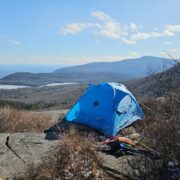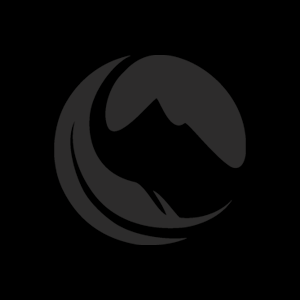This trip took place on the unceded lands of the Inupiat and Gwich’in people.
Below is a rough sketch of our trip. Pictures are in the comments below. Please don’t hesitate to reach out at [email protected] if you have more specific questions.
Route: https://caltopo.com/m/A5H1
I’ve intended to put this trip report up since it took place, back in the summer of 2019. I don’t think it is meaningfully hurt by being tardy.
Our group of six walked from the Alatna River to the headwaters of the Noatak River via the Arrigetch Valley. We then picked up boats about thirty-some miles from the headwaters and floated for ~20 days out to Kotzebue, AK. We caught a commercial flight from Kotz to Anchorage.
The trip was born of a few different things:
The desire to float a “major” northern river in North America; A desire to spend significant time in the Brooks Range; The relative ease of access by returning to a region/bush plane company that some of us had been to/used before.
The float of the Noatak was our “main course,” but we thought it would be foolish to skip out on some walking, especially while being so close to the iconic Arrigetch. The route took us from the Alatna, through the Arrigetch, and eventually into the Noatak drainage. It took us all of nine days. This walking was truly spectacular, amongst the best I’ve done anywhere. The Arrigetch is worth the hype. It should be stated that the pass “out of” (or “in to”) the Arrigetch is not for the faint of heart. Though one might expect loose, high angle talus in the Sierra, Winds, or elsewhere in the lower 48, you can feasibly walk for weeks at a time without encountering it in the Brooks Range. If you have felt comfortable on high angle, moving, talus elsewhere, this is not different. But given the remote nature of this itinerary, I would know for sure that this is terrain you are comfortable with prior to attempting this route.
The Noatak is primarily flat-water, though it features a handful of ledges, swifts, and sets that are of consequence. Like any river, it changed dramatically during a flood event. We had a good scare as a result.
I dislike the dismissive nickname “Sloatak,” but I suppose more experienced whitewater paddlers would consider the name fitting. I found the Noatak to be breathtaking and sufficiently challenging for our party of primarily flat-water paddlers. The river is characterized by stunning Brooks Range scenery and significant time in the coastal plain and boreal forest habitats, too. Camping is typically easy to find. We enjoyed tremendous fishing after Noatak Village.
Notes on Gear
For backpacking, I brought too much clothing and was not critical enough with our menu. I am a much more committed lightweight backpacker now than I was then; the aforementioned high angle talus would have been much easier. My pack was at roughly 55 lbs to start the 9 day backpack section.
We used 3 PakBoats, rented from a friend. I recommend them. They’re sturdy, extremely similar to paddling a “normal” canoe, and make bush flights easier and commercial flights possible.
We used 55 gallon drums, borrowed from the NPS, for our food storage while on the river. For our volume of food, this was necessary, though annoying. I can’t think of a better way to handle food storage at our volume, but trying to keep our food volume down would be key.
We used the Cook Custom Sewing Lean 3 to cook/hang out in, etc. It was a good-not-great option for this vital function. Winds occasionally pulled the tarp out from under our extensive rock or sand staking, and pitching it was finicky. But it is sizeable and offers welcome shelter on a trip of this nature (i.e., if it was driving rain, we wanted somewhere we could eat (not the tent) and read, instead of paddling).
Notes on Logistics
We stayed at Sven’s Hostel in Fairbanks. Great spot to do trip prep like food packing, fuel pouring, etc.
We took GoNorth up the Haul Road. Solid!
We flew with Coyote Air from Coldfoot to the Alatna. They also dropped our boats/resupply at the Noatak. Highly recommend Dirk and Danielle’s air service, as well as their beta. They know the Brooks Range really well and gave us some excellent beta.
We camped outside of Kotzebue for four days. A bit annoying but also a bit nice. Unavoidable because we gave ourselves a five-day cushion to cross the Sound into Kotz, in case of rough weather. The weather ended up being perfect.
Note on Wildlife
We saw 7 grizzlies, ~20 caribou, a lot of salmon, a lot of seals.








Home › Forums › Arrigetch Peaks and Noatak Float, July & August 2019